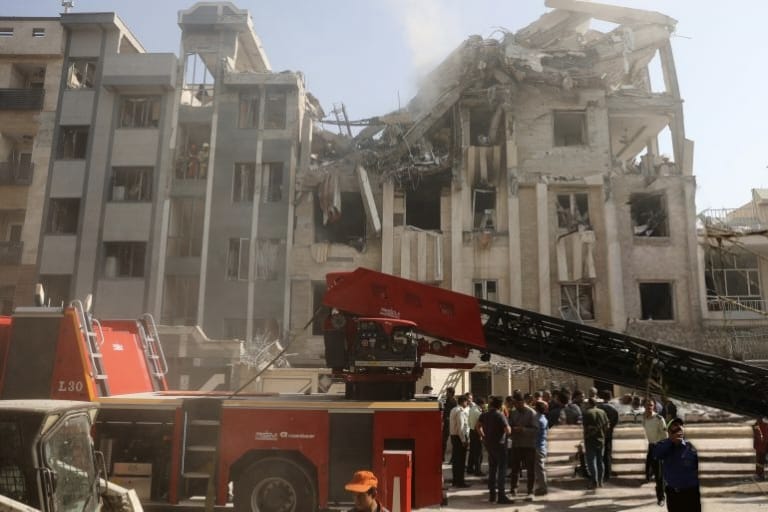The Israel-Iran war has entered a deadly and destructive phase, unleashing a new wave of violence across West Asia. In a swift and unprecedented move, Israel launched Operation Rising Lion, targeting multiple nuclear and military sites inside Iran. Within hours, Iran responded with a massive missile and drone barrage targeting central Israel, resulting in civilian casualties and property damage.
This latest escalation has shocked the world, drawing attention to what could become the most dangerous conflict in the Middle East in recent decades. With nuclear facilities, military leaders, and major cities under attack, the Israel-Iran war is no longer a covert or proxy battle—it is an open war with global consequences.
Major Developments in the Israel-Iran War
Israel’s Airstrikes Hit Critical Iranian Targets
On June 13, 2025, Israeli fighter jets and drones conducted synchronized airstrikes on more than 15 strategic Iranian locations. These included nuclear enrichment facilities near Natanz, Fordow, and Isfahan, and command centers in Tehran, Shiraz, and Arak. The Israeli Defense Forces (IDF) claimed they successfully neutralized Iran’s radar systems, missile launch sites, and even high-level military command.
Among the top Iranian officials reportedly killed were:
- Gen. Hossein Salami, head of the Revolutionary Guards
- Mohammad Bagheri, Iran’s military chief of staff
- Ali Shamkhani, former national security advisor
Images from Tehran showed buildings reduced to rubble and explosions lighting up the night sky as Iranian air defenses scrambled to respond.
Iran’s Fierce Retaliation
In a swift and aggressive reply, Iran launched more than 100 ballistic missiles and drones, targeting Tel Aviv, Ramat Gan, and Jerusalem. According to Israeli emergency services, at least two people were killed, and over 30 were injured, some critically, due to collapsing buildings and fires sparked by missile impacts.
Iran’s Revolutionary Guards Corps stated that the response was “forceful and precise,” and warned of further actions if Israel continues its attacks.
Nuclear Facilities Under Threat
The head of the United Nations’ nuclear watchdog, Rafael Grossi, confirmed that Israel’s strike destroyed an aboveground enrichment plant near Natanz, causing chemical and radiological contamination. Although the underground centrifuges were not directly hit, their power systems were disrupted, potentially damaging uranium processing operations.
These strikes have cast a shadow over Iran’s nuclear future and raised fears of a radiological leak or even a nuclear accident amid ongoing combat.
Economic & Global Reactions
Oil Markets in Turmoil
As the Israel-Iran conflict intensifies, global oil prices have skyrocketed, especially affecting import-heavy countries like India. Experts warn that prolonged instability in the Gulf region may lead to a supply shock, impacting everything from fuel prices to inflation globally.
Diplomatic Statements
- United Nations: Called for an immediate ceasefire and warned against further civilian casualties.
- United States: Provided missile interception support to Israel but stopped short of deploying troops.
- European Union: Urged restraint and warned both nations that further escalation may trigger regional instability.
- India and China: Both issued travel advisories and urged citizens to evacuate from the conflict zones.
Miscalculation Led to Iranian Setback
Insiders from Tehran revealed that Iranian leaders underestimated the likelihood of an Israeli attack ahead of nuclear negotiations scheduled in Oman. Several commanders reportedly ignored intelligence reports, choosing to remain in their personal residences rather than taking shelter.
This led to the deaths of multiple top brass, including Gen. Amir Ali Hajizadeh, who was killed while attending an emergency war meeting in Tehran—a critical blow to Iran’s aerospace command.
Military Campaigns Intensify
- Israel has declared a state of emergency, and Defense Minister Israel Katz has warned of continued operations.
- Iran’s airspace remains closed, affecting commercial aviation and prompting international flight diversions.
- Israel’s Iron Dome and allied U.S. systems intercepted dozens of Iranian projectiles, minimizing casualties.
Despite calls for peace, both nations appear firm on their strategies, with Iran promising “bitter punishment” and Israel vowing to eliminate all nuclear threats.
Humanitarian Toll
In both countries, civilians are paying the price. In Ramat Gan, a 70-year-old woman died after a missile hit her residential building. In Tehran, state media reports over 300 people injured and at least 78 fatalities in what is being described as “the darkest day since the Iran-Iraq war.”
Hospitals are overwhelmed. Rescue operations continue under the constant threat of renewed airstrikes. Aid agencies are calling for humanitarian corridors to evacuate injured civilians.
What’s Next in the Israel-Iran War?
With neither side backing down, the risk of full-scale war looms large. Proxy groups like Hezbollah in Lebanon and Houthis in Yemen may enter the fray, further destabilizing the region.
Former U.S. President Donald Trump, who had initiated nuclear talks with Iran, criticized both governments and urged Iran to “return to the table or face more brutal consequences.”
Analysts fear the Israel-Iran war could trigger regional chaos, drawing in the U.S., Russia, Saudi Arabia, and other global powers, making the current conflict a potential flashpoint for a broader Middle East war.







